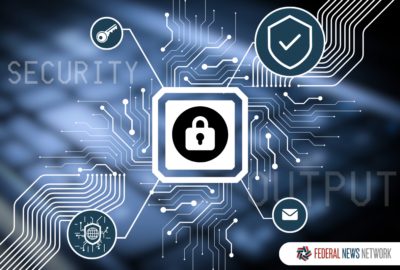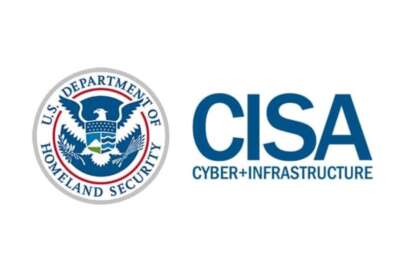Has the time come for a new approach to spectrum allocation?
"DSS is a way to share spectrum to coexist with other users. So at a smaller time scale in more granular pieces by frequency," said Carolyn Kahn.
Electromagnetic spectrum which enables wireless communications is both scarce and in high demand. Until now, deciding who can use a particular frequency has been a zero sum game. The government auctions it off, and the winner has it for keeps. My next guest says the current spectrum management process is unsustainable. She led a major MITRE Corporation study, which suggests what it calls a dynamic approach to spectrum management. MITRE’s chief spectrum economist Carolyn Kahn joined the Federal Drive with Tom Temin to discuss more.
Interview transcript:
Tom Temin And give us the current status of electromagnetic spectrum. There hasn’t been an auction in a while. What’s what is the background here? Give us the context in the United States.
Carolyn Kahn Sure. So there have been a lot of auctions, including the C-band auction, which generated almost $90 billion. But that’s not a sustainable approach, because we can’t just always auction spectrum. We need spectrum. So we’re trying to use it more efficiently and effectively. And currently, the FCC does not have auction authority for much of the many of the bands. But there are other approaches in addition to having the FCC being able to auction spectrum to use it more efficiently and effectively, namely through dynamic spectrum sharing. So this is a way where spectrum can be shared.
Tom Temin Sure. Before we get to what dynamic spectrum allocation would look like, what’s the background of the study? Was this commissioned by the FCC or what caused you to look at this particular topic?
Carolyn Kahn No, this was an independent MITRE study. So because of the change of administration and all of the work that we’ve done for so many years, we thought this was a great time and we were in a great position to put forward suggestions for the transition and the change of the administration.
Tom Temin And would it be safe for accurate to say that spectrum is a finite resource, as I said at the top? They’re not making more of it. And there hasn’t been any technical solution to expanding the amount of frequency available. Correct?
Carolyn Kahn I call it practically finite because you can divide it into smaller and smaller pieces. But the amount that’s usable, they’re not making any more spectrum. So it’s a matter of how we can use it more efficiently and more effectively.
Tom Temin All right. So what is dynamic spectrum allocation or you call it [Dynamic spectrum sharing (DSS)].
Carolyn Kahn Sure. So DSS is a way to share spectrum to coexist with other users. So at a smaller time scale in more granular pieces by frequency, by location and by time where spectrum can be shared, users can be closer together to operate without interference to operate effectively.
Tom Temin Is this similar to what they have been doing in fiber optics, which is to share light spectrum, if you will, and get more and more bandwidth effectively out of the same strand?
Carolyn Kahn Well, actually with 60, it’s looking at putting together different modes of use of communications. So from fiber to wireless to satellite. So these mechanisms can actually all be combined, which is even another way to use spectrum more efficiently and effectively.
Tom Temin Is it similar to slicing?
Carolyn Kahn That’s a very specific technical approach where you use different use cases. So this is broader and really being able to use spectrum using enabling more users to operate closer together for wireless communications and radio services.
Tom Temin In other words, just to put it in blunt terms or layman’s terms, a specific frequency could be mine for a microsecond and then somebody else’s for a microsecond and then mine again, and then a third parties. And it’s constantly being allocated by the split second.
Carolyn Kahn Yes. And by different locations and different frequencies? Yes.
Tom Temin And does the technology exist to do that?
Carolyn Kahn Yes, it does. But we need more testing and we need experimentation. It’s all based on data. And so we need accurate data. We need reliable data and trusted data. And so MITRE has an initiative through the national radio dynamic zones where we can create these places for which protects incumbents and protects users and the experiment for accurate data which is needed to enable it.
Tom Temin Yeah. You need a sandbox where you’re using the spectrum that people are already using without interfering from their use.
Carolyn Kahn Yes, and also so that their use doesn’t interfere with the experiment so that you can have their precise data.
Tom Temin Got it. We’re speaking with Carolyn Kahn. She’s the chief spectrum economist at the nonprofit MITRE Corporation. So what is the prospect of conducting these tests? You need the FCC to inaugurate a test program or how could this actually happen?
Carolyn Kahn Sure. So FCC NTIA, federal agencies, industry all need to come together to collaborate, to identify different locations. So we have through the nerds as a service. The first experiment that we’ll be doing is out at Hat Creek Radio Observatory in California. But this is just a first instance that then can be expandable across the nation and any location, any type of size to conduct these experiments to enable dynamic spectrum sharing.
Tom Temin And are the carriers interested in this. The AT&T, the T-Mobile’s and the Verizon’s that primary trunk wireless carriers. Are they in with you and looking at this.
Carolyn Kahn They’re an important player. And so they have purchased a lot of spectrum for auction. They’re important in when more demand is there. They need to be able to access more spectrum. And when they have access spectrum to be able to lend it to others or have a transaction for others to use it to. So all the players, all the stakeholders are very important and they need to be a part of all of this.
Tom Temin And besides the technical capability through testing and so forth, it sounds like there might be a regulatory aspect to enable this to happen.
Carolyn Kahn Yeah, so there could be different types of regulatory actions. You have the auctions like we talked about beginning from one end to more of a negotiation process to a data driven process. So there’s different mechanisms for that.
Tom Temin And what’s the ultimate vision that the given spectrum that the United States has could be used to yield 1,000% more, 10,000% more? Do you have an end picture in mind, ultimately?
Carolyn Kahn Sure. So we want to meet the growing demand. So demand has been growing exponentially. And by using more advanced technologies, driven approaches more automation. Our goal is to be able to meet the demand which is so important to our economy. It’s important to national security and to the U.S.
Tom Temin And is there anyone interested in this, say, in Congress or possibly that you know of in the current administration or anyone even in the incoming administration? Does this have a constituency?
Carolyn Kahn There’s a lot of interest in spectrum. Of course, our spectrum community, we have a lot of friends and we know a lot of the people. But this is important to the whole community and spectrum, but really everybody, because everybody uses wireless communications and radio services. So it’s important to everyday life as well.
Tom Temin And you mentioned 6G that is coming. My understanding was they were going to skip six and go right to seven. Could this be something that could be available in a 7G world? I don’t think they’ve gotten 5G straightened out yet, but that’s just me. 7G or 9G or something, that could be years off, do you think?
Carolyn Kahn I think it’s important to future generations of technology. It’s important now and it’s important for the future. So I think it can scale as we go forward with more advanced telecommunications.
Tom Temin And somehow I get the sense that artificial intelligence has to be connected to this, because it’s driving everything else we’ve been talking about in the last year. Is there an AI enablement for dynamic spectrum?
Carolyn Kahn Yes. So AI can help us use the data, process the data more efficiently, certainly quicker. So it’s really important to all layers of the network stack from looking at usage and looking at how devices and users are currently using the spectrum, using machine learning to look at historical patterns and identifying patterns to projecting future uses to optimize the management of the spectrum, as well as to optimize how users are using it.
Tom Temin And by the way, how do you get to be a chief spectrum economist? That that’s a pretty narrow field, I’d say.
Carolyn Kahn So you start before it becomes a hot topic, and you continue to build. And that was my approach.
Copyright © 2025 Federal News Network. All rights reserved. This website is not intended for users located within the European Economic Area.
Tom Temin is host of the Federal Drive and has been providing insight on federal technology and management issues for more than 30 years.
Follow @tteminWFED






